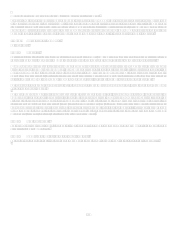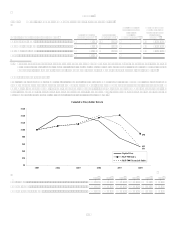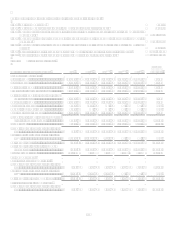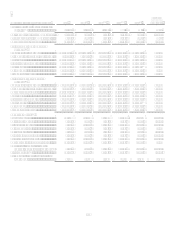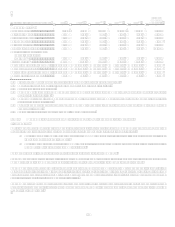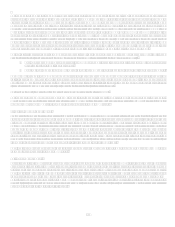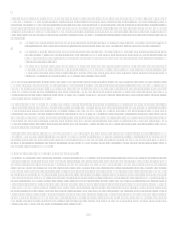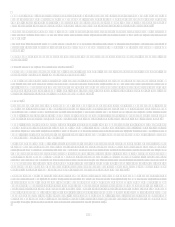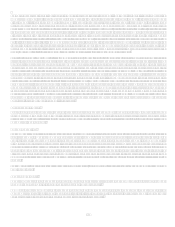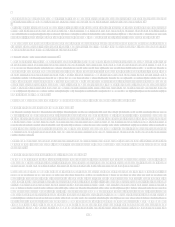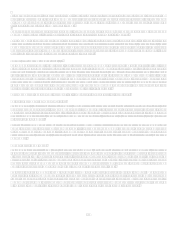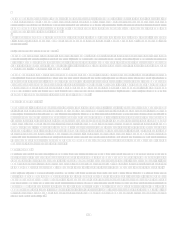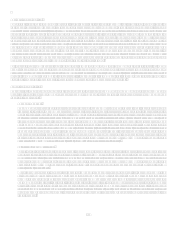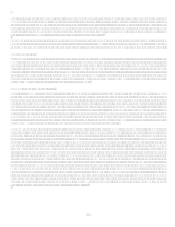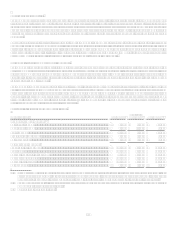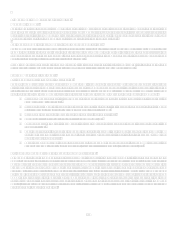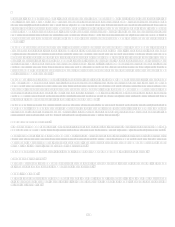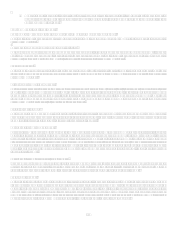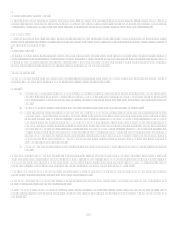Capital One 2008 Annual Report Download - page 53
Download and view the complete annual report
Please find page 53 of the 2008 Capital One annual report below. You can navigate through the pages in the report by either clicking on the pages listed below, or by using the keyword search tool below to find specific information within the annual report. 35
be investment grade securities and subject to a lower risk of loss. These senior tranches are also recorded in accounts receivable from
securitizations at estimated fair value. The Company classifies senior retained tranches as available for sale securities in accordance
with SFAS No. 115, Accounting for Certain Investments in Debt and Equity Securities (SFAS 115), and changes in the estimated
fair value are recorded in other comprehensive income.
The fair value of retained interest is highly sensitive to changes in certain assumptions. To the extent assumptions used by
management do not prevail, the estimated fair value of retained interests could be materially impacted.
As of December 31, 2008 and 2007, accounts receivable from securitization totaled $6.34 billion and $4.72 billion, respectively. This
balance consists of retained residual interests that are recorded at estimated fair value and totaled $2.30 billion and $2.26 billion at
December 31, 2008 and 2007, respectively. The remaining balance relates to cash collections held at financial institutions that are
expected to be returned to the Company on future distribution dates and principal collections accumulated for expected maturities of
securitization transactions with a subsequent return of loans receivables.
Recognition of Customer Rewards Liability
The Company offers products, primarily credit cards, that provide program members with various rewards such as airline tickets, free
or deeply discounted products or cash rebates, based on account activity. The Company establishes a rewards liability based on points
earned which are ultimately expected to be redeemed and the average cost per point redemption. As points are redeemed, the rewards
liability is relieved. The cost of reward programs is primarily reflected as a reduction to interchange income. The rewards liability will
be affected over time as a result of changes in the number of account holders in the reward programs, the actual amount of points
earned and redeemed the actual costs of the rewards, changes made by reward partners and changes that the Company may make to
the reward programs in the future. To the extent assumptions used by management do not prevail, rewards costs could differ
significantly, resulting in either a higher or lower future rewards liability, as applicable.
As of December 31, 2008 and 2007, the rewards liability was $1.4 billion and $1.3 billion, respectively.
Derivative Instruments and Hedging Activities
The Company utilizes certain derivative instruments to minimize significant unplanned fluctuations in earnings caused by interest rate
and foreign exchange rate volatility. The Companys goal is to manage sensitivity to changes in rates by offsetting the repricing or
maturity characteristics of certain assets and liabilities, thereby limiting the impact on earnings. The use of derivative instruments does
expose the Company to credit and market risk. The Company manages credit risk through strict counterparty credit risk limits and/or
collateralization agreements.
At inception, the Company determines if a derivative instrument meets the criteria for hedge accounting under SFAS No. 133,
Accounting for Derivative Instruments and Hedging Activities as amended by SFAS No. 138, Accounting for Certain Derivative
Instruments and Certain Hedging Activities (SFAS 133). Ongoing effectiveness evaluations are made for instruments that are
designated and qualify as hedges. If the derivative does not qualify for hedge accounting, no assessment of effectiveness is needed by
management.
Accounting for Income Taxes
The Company accounts for income taxes in accordance with SFAS No. 109, Accounting for Income Taxes (SFAS 109), recognizing
the current and deferred tax consequences of all transactions that have been recognized in the financial statements using the provisions
of the enacted tax laws. Deferred tax assets and liabilities are determined based on differences between the financial reporting and tax
basis of assets and liabilities and are measured using the enacted tax rates and laws that will be in effect when the differences are
expected to reverse. The Company adopted the provisions of FASB Interpretation No. 48, Accounting for Uncertainty in Income
Taxes, an Interpretation of FASB Statement No. 109, (FIN 48) effective January 1, 2007.
The calculation of the Companys income tax provision is complex and requires the use of estimates and judgments. When analyzing
business strategies, the Company considers the tax laws and regulations that apply to the specific facts and circumstances for any
transaction under evaluation. This analysis includes the amount and timing of the realization of income tax provisions or benefits.
Management closely monitors tax developments in order to evaluate the effect they may have on its overall tax position and the
estimates and judgments utilized in determining the income tax provision and records adjustments as necessary.


